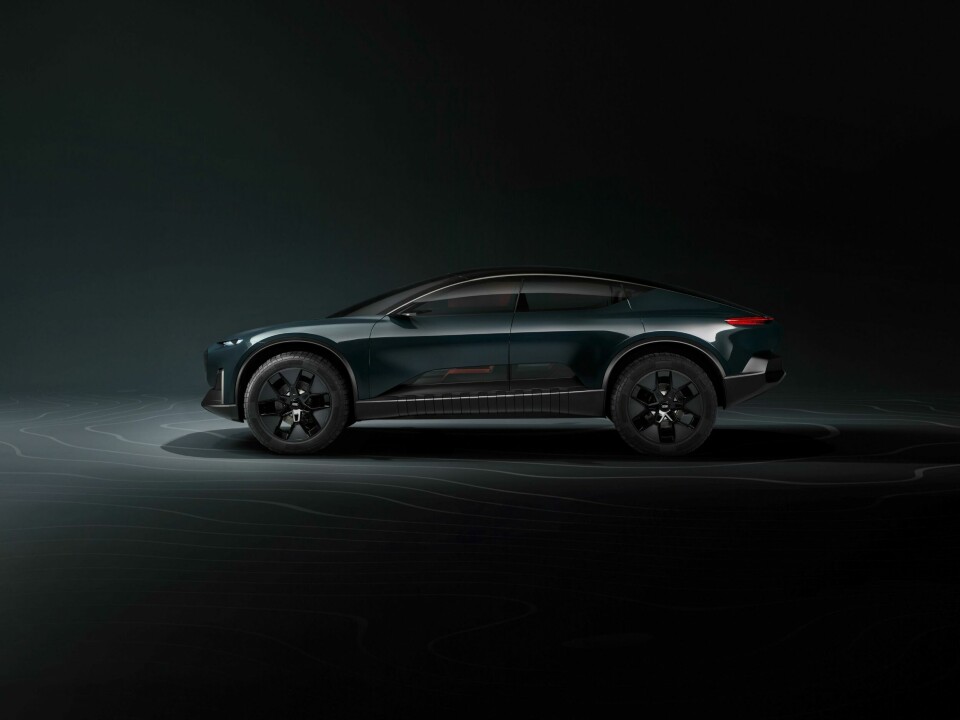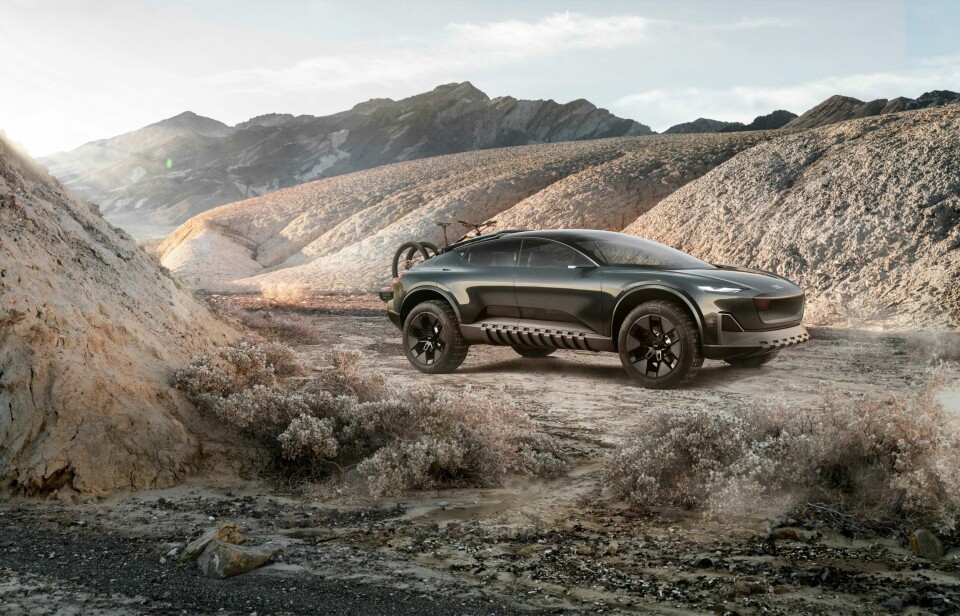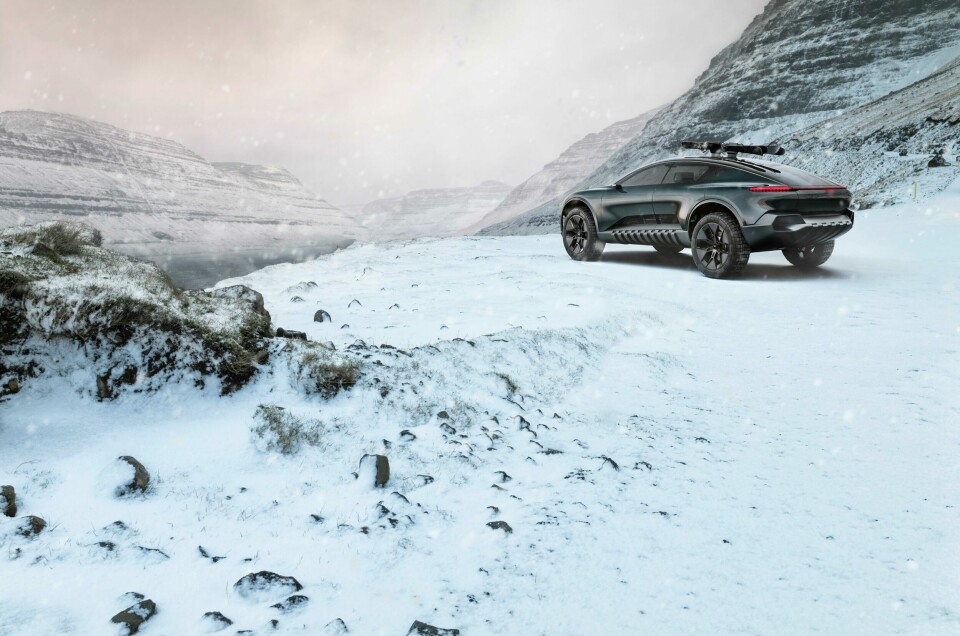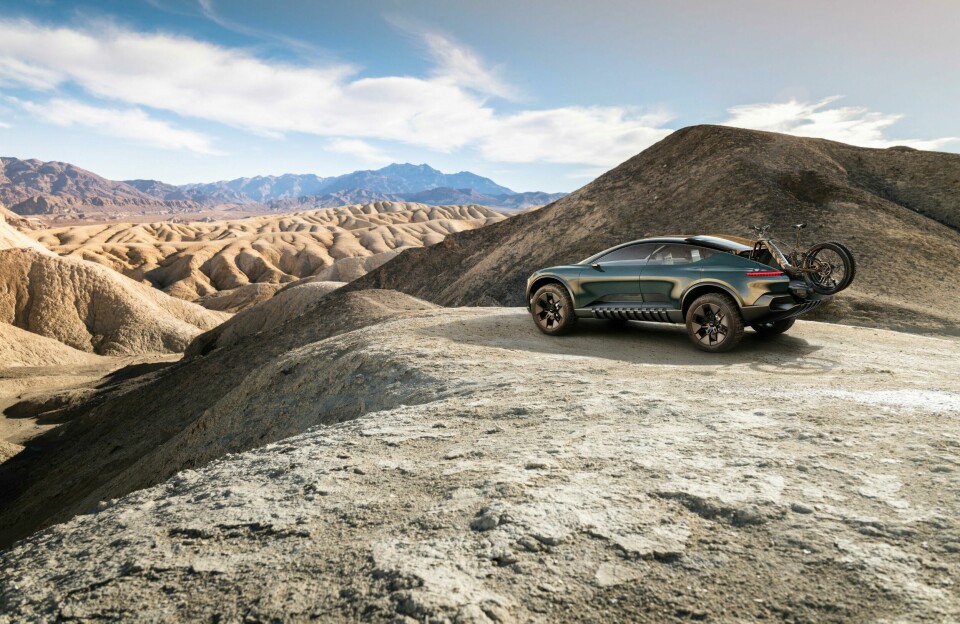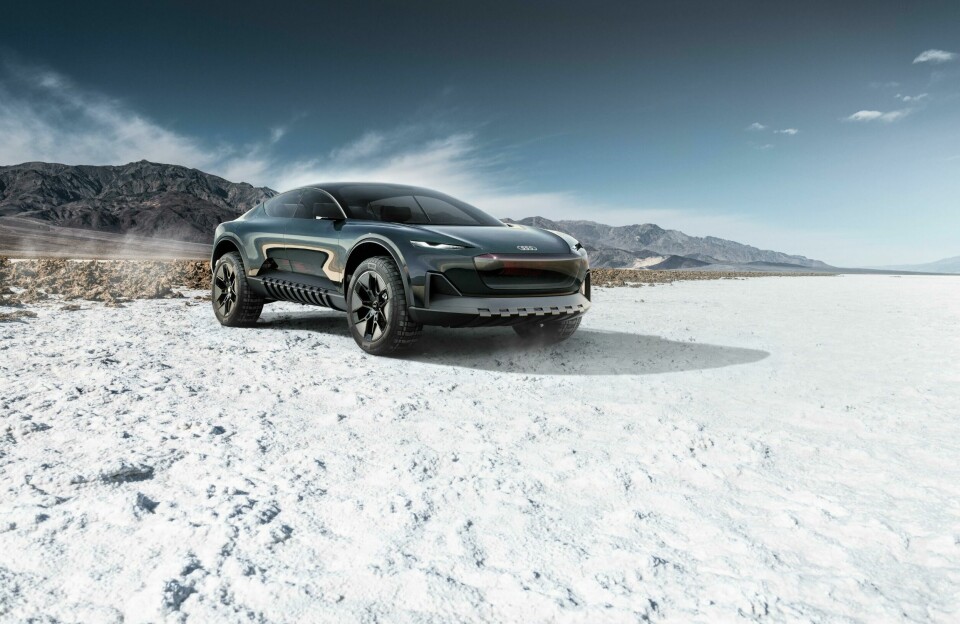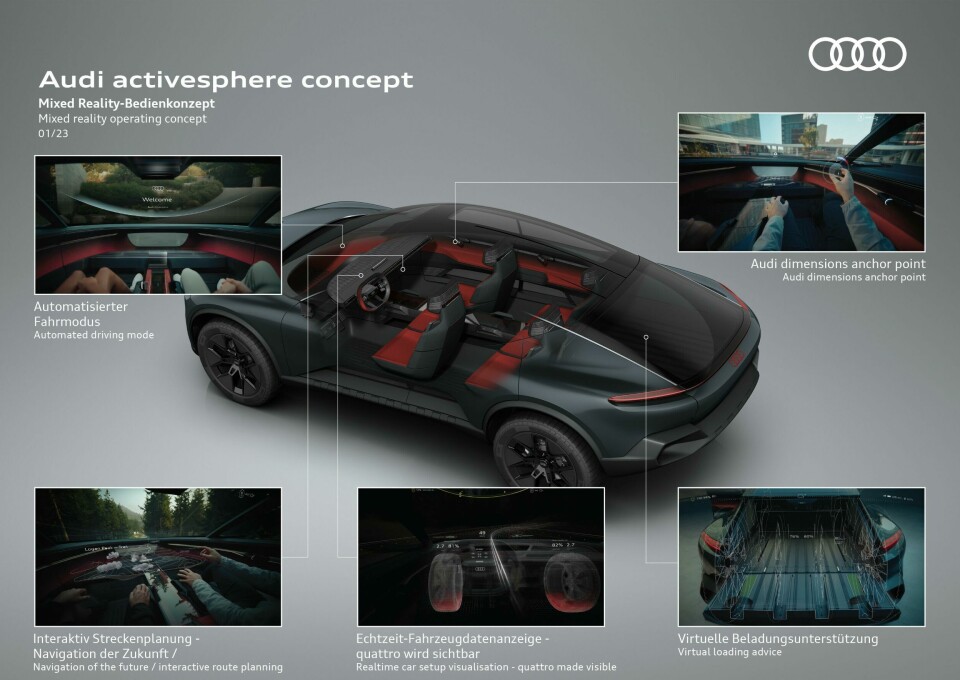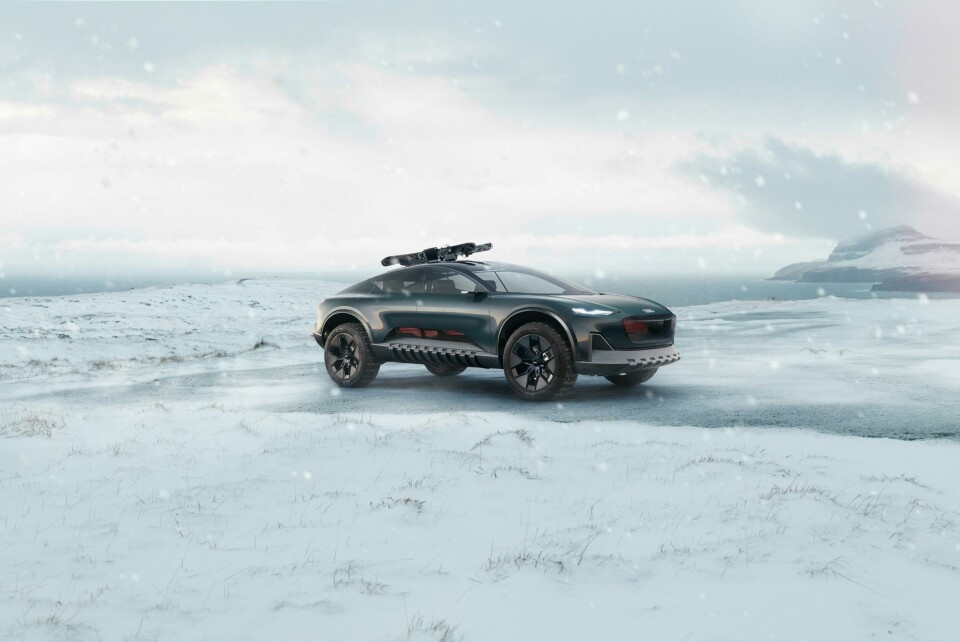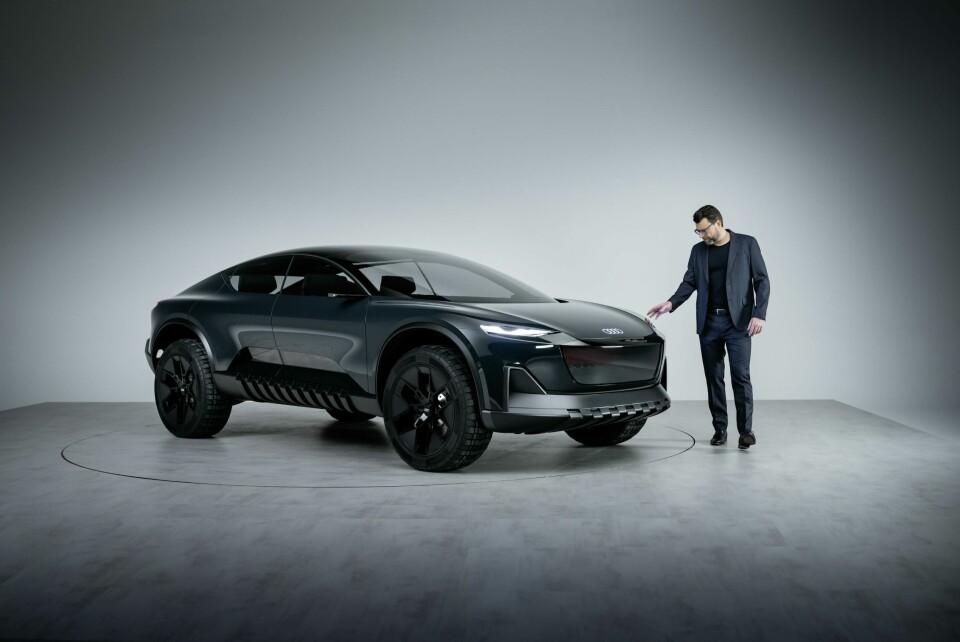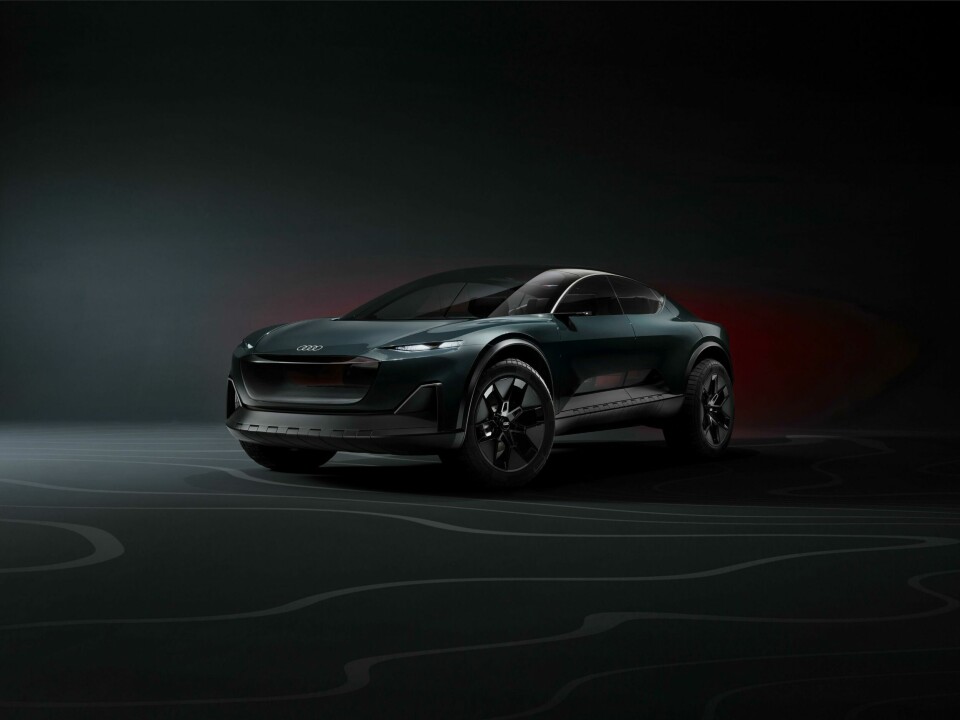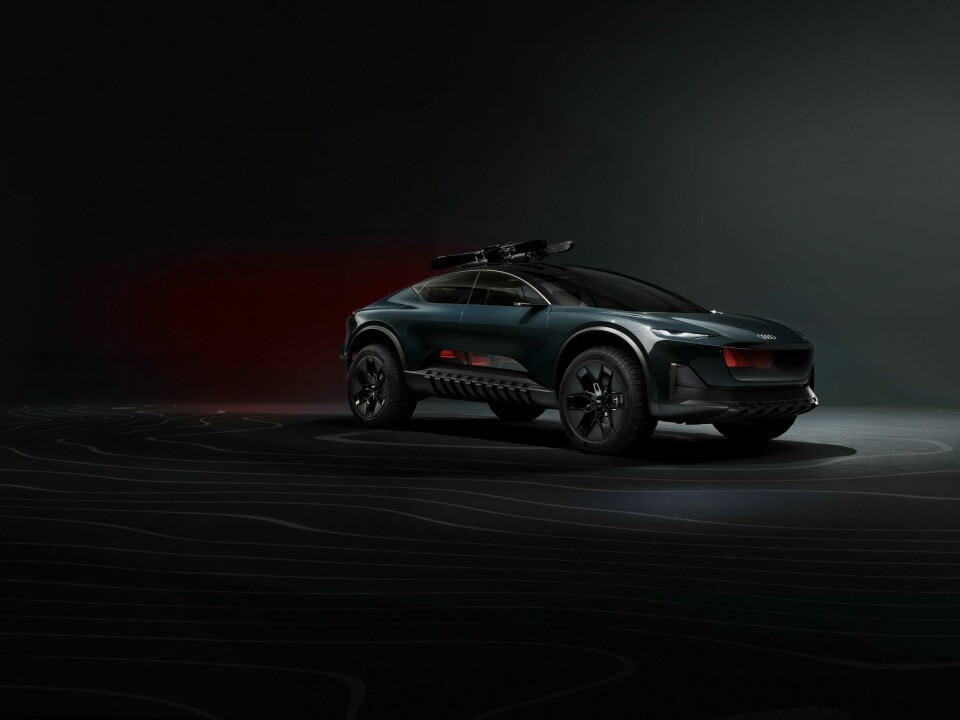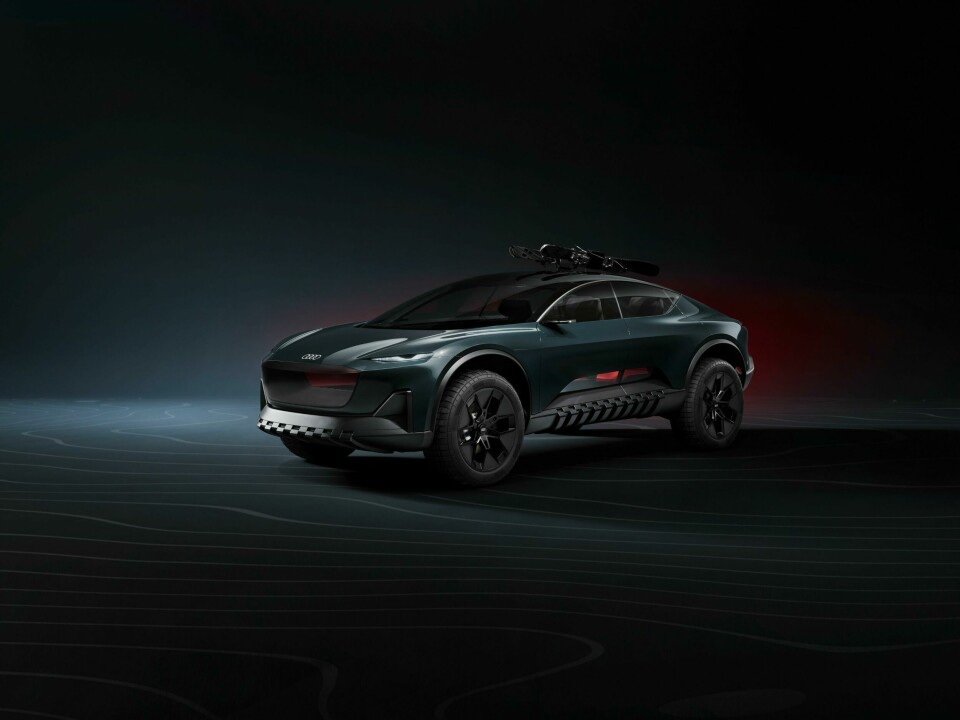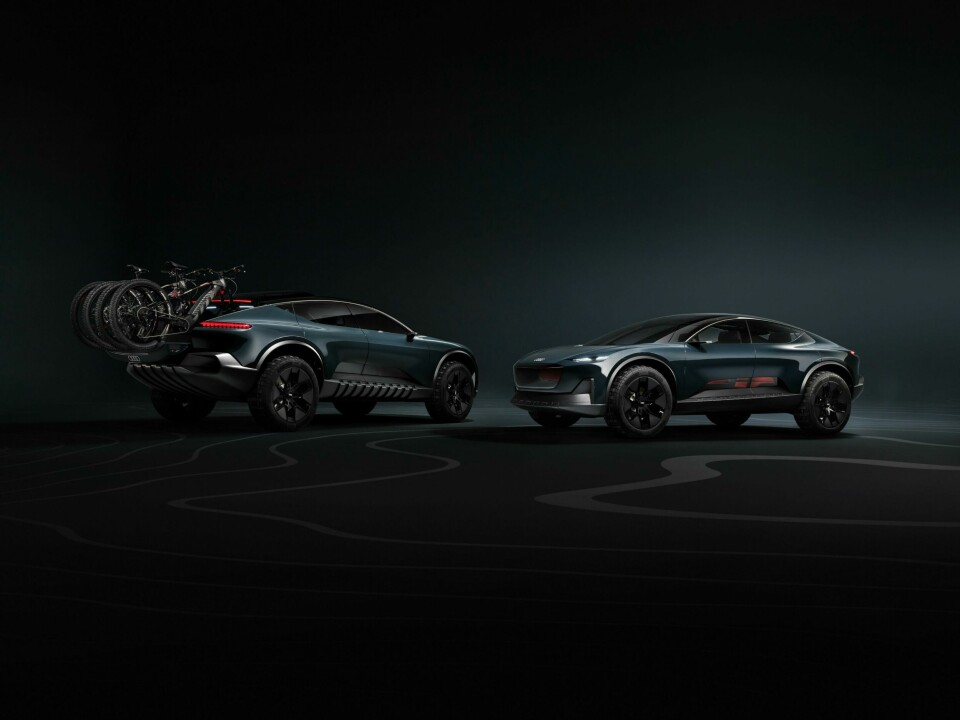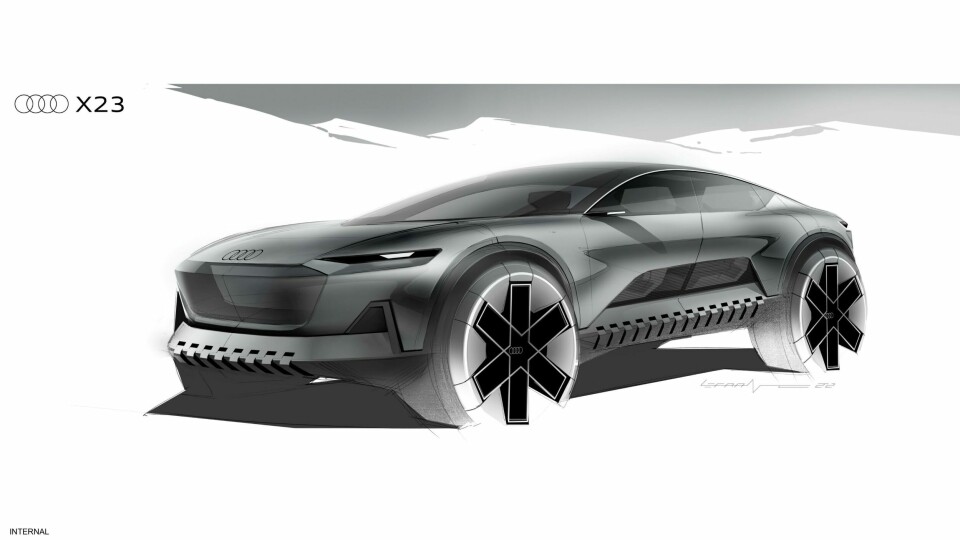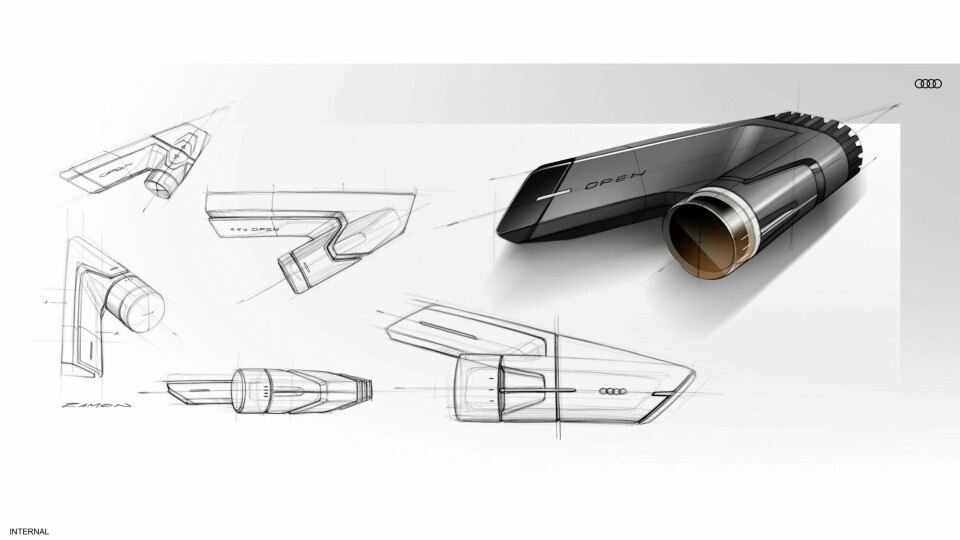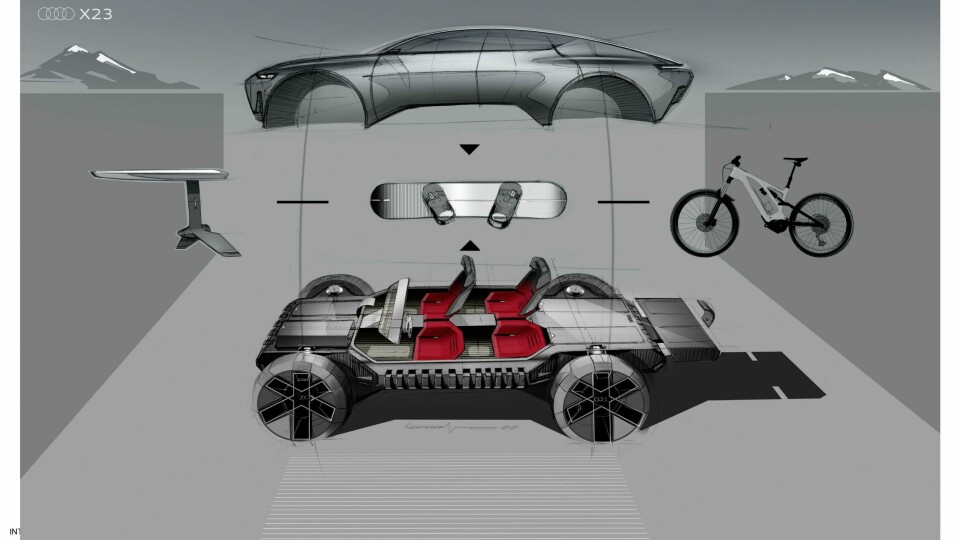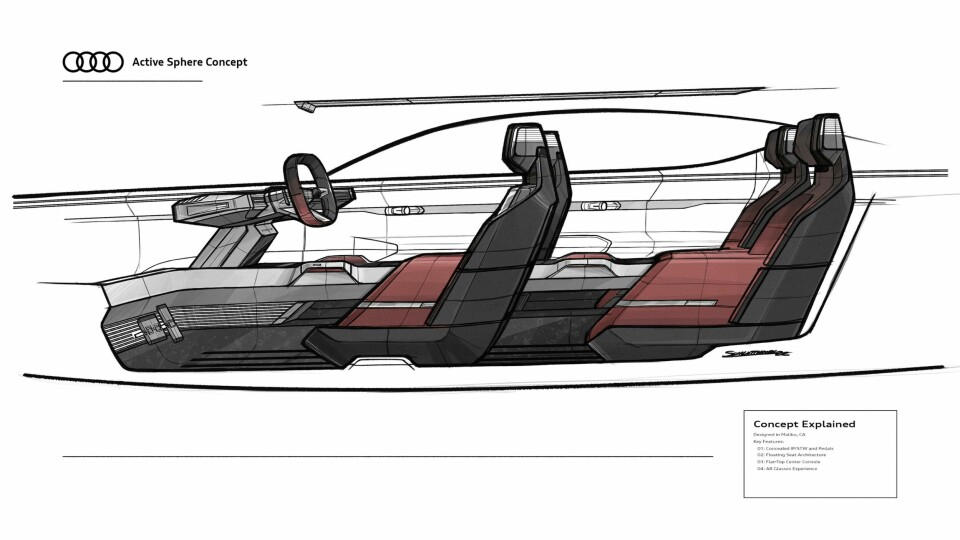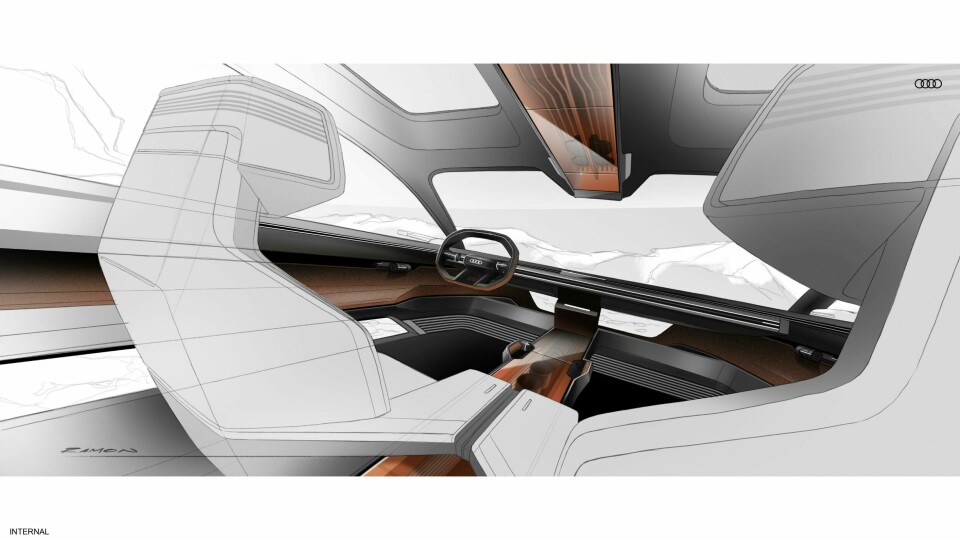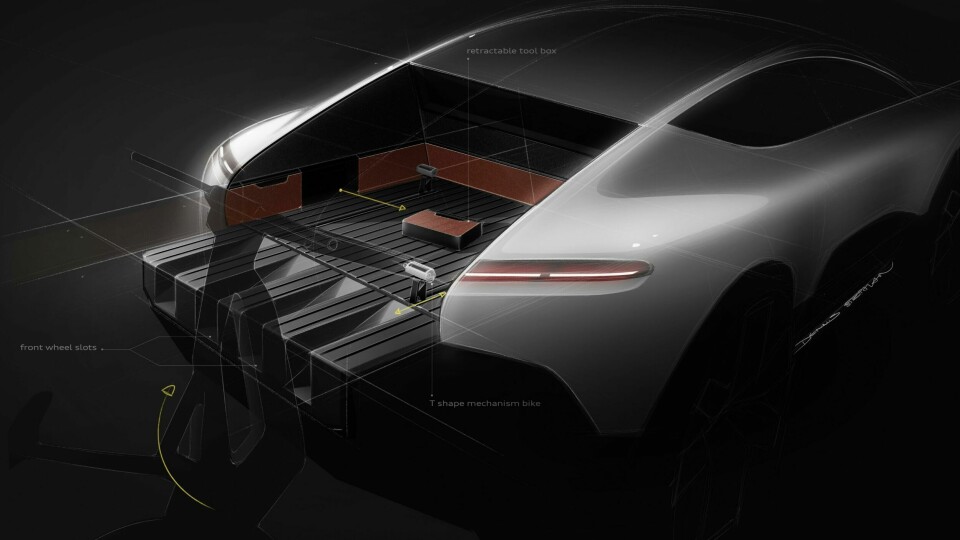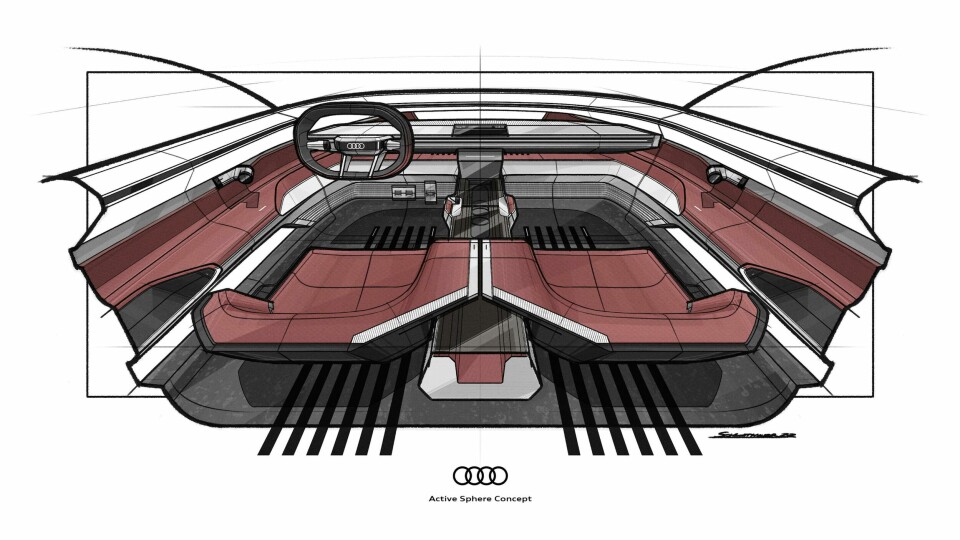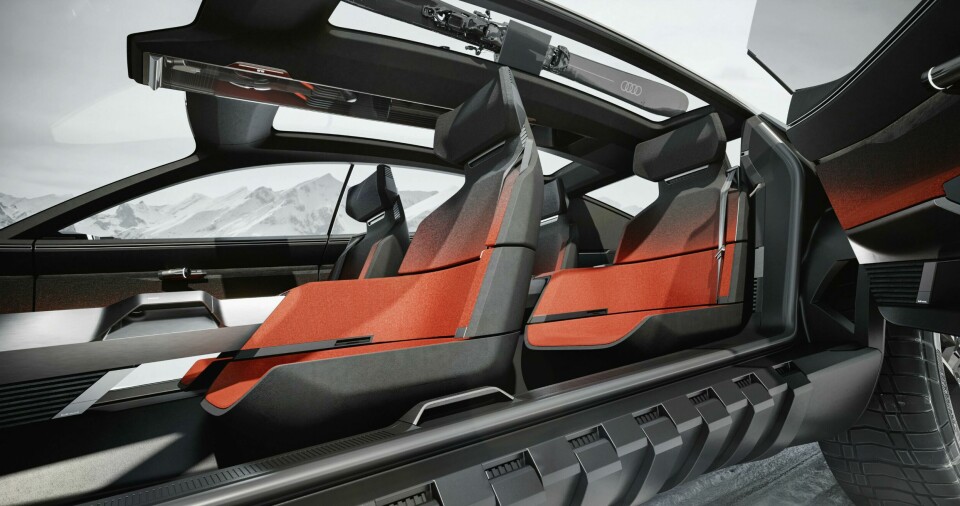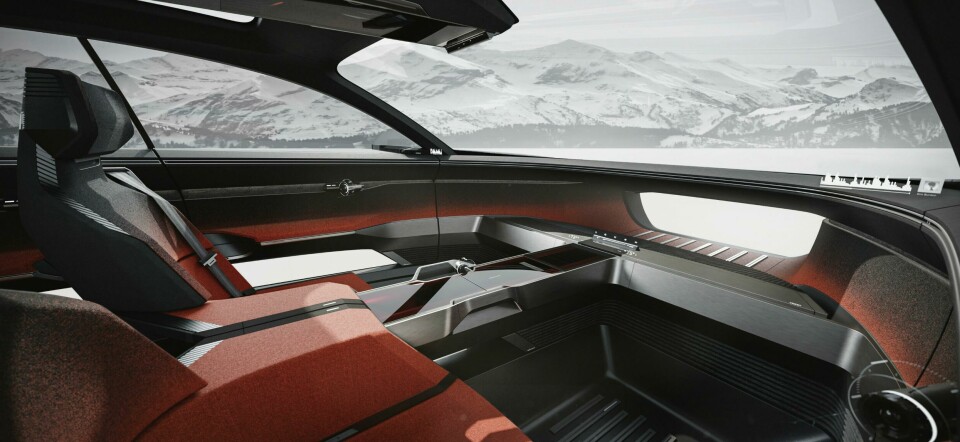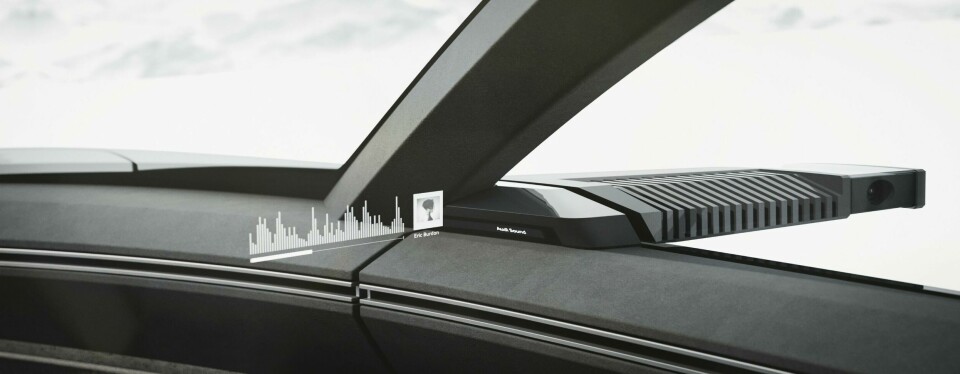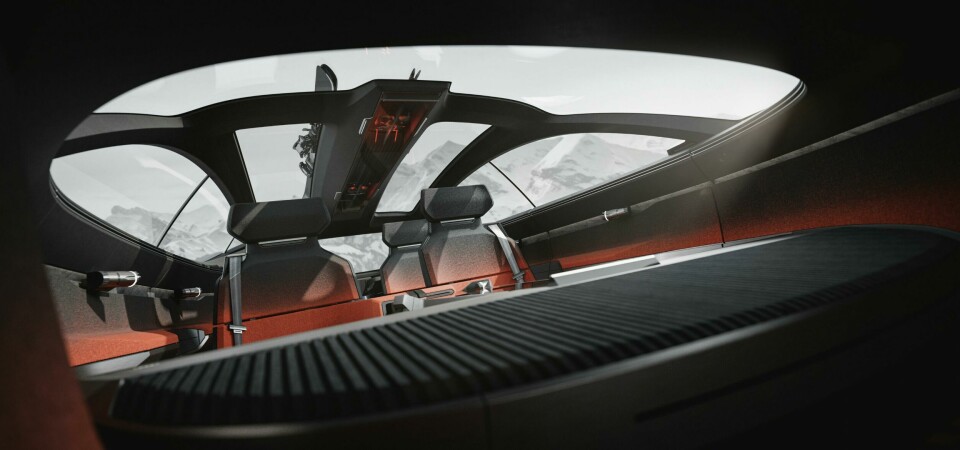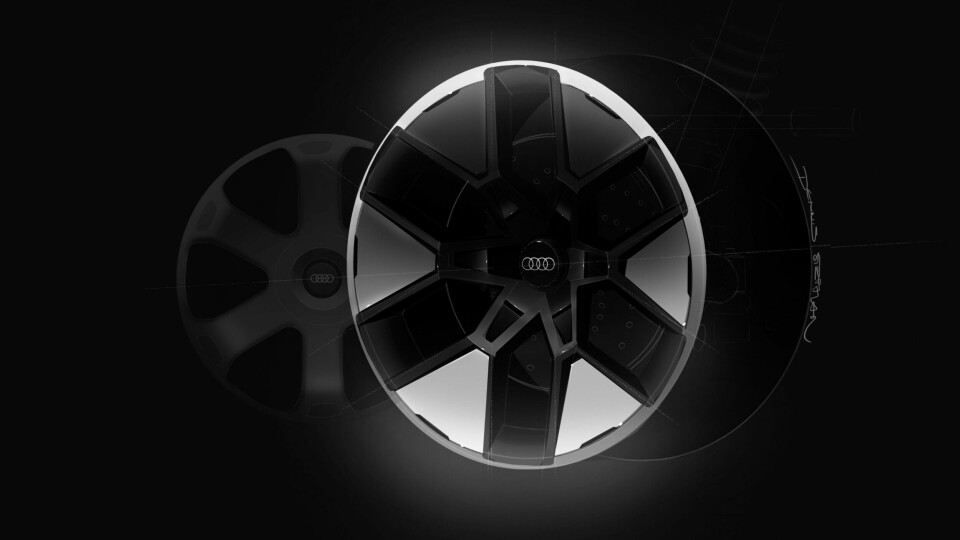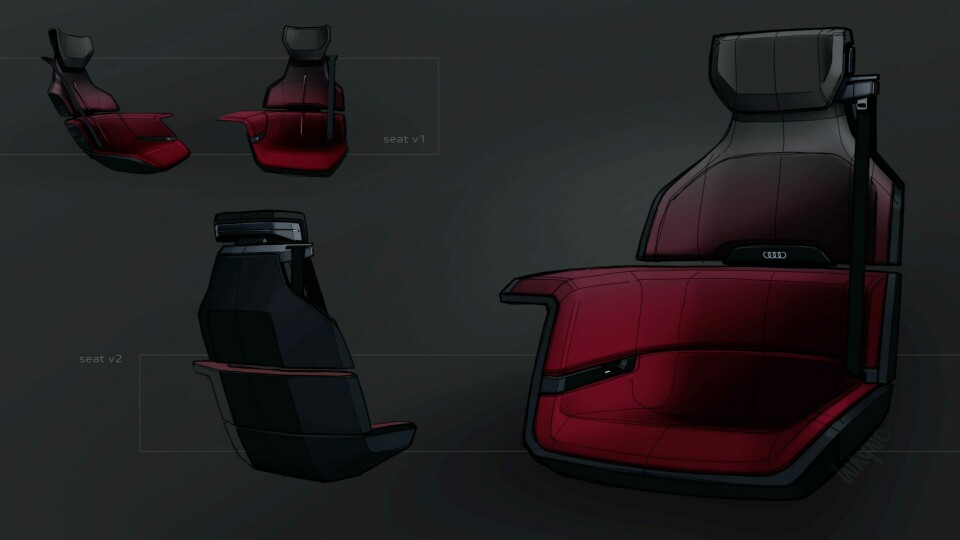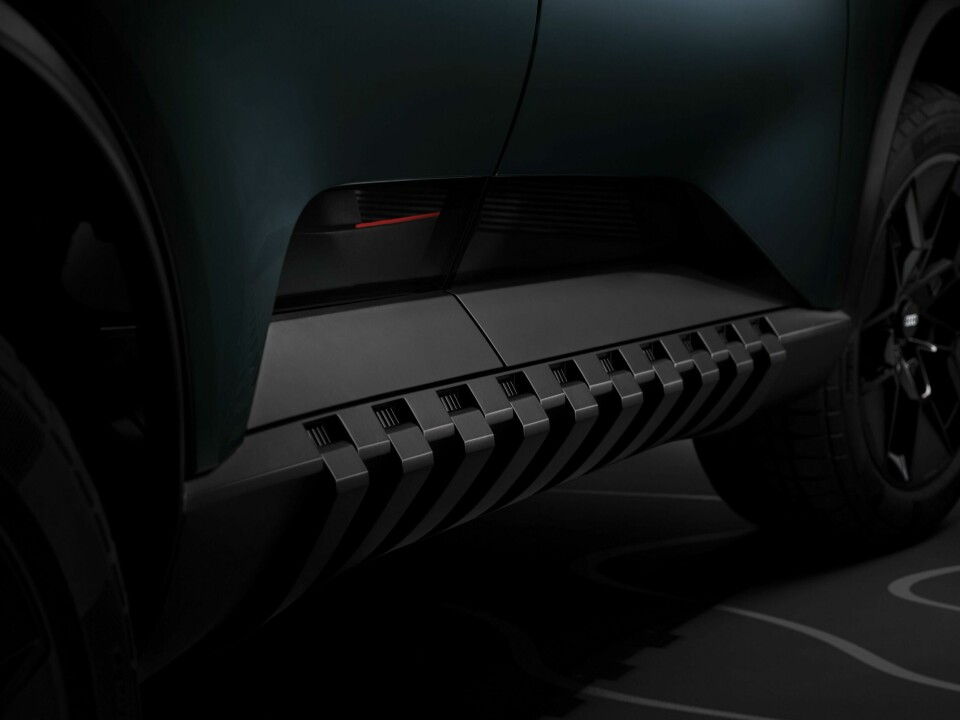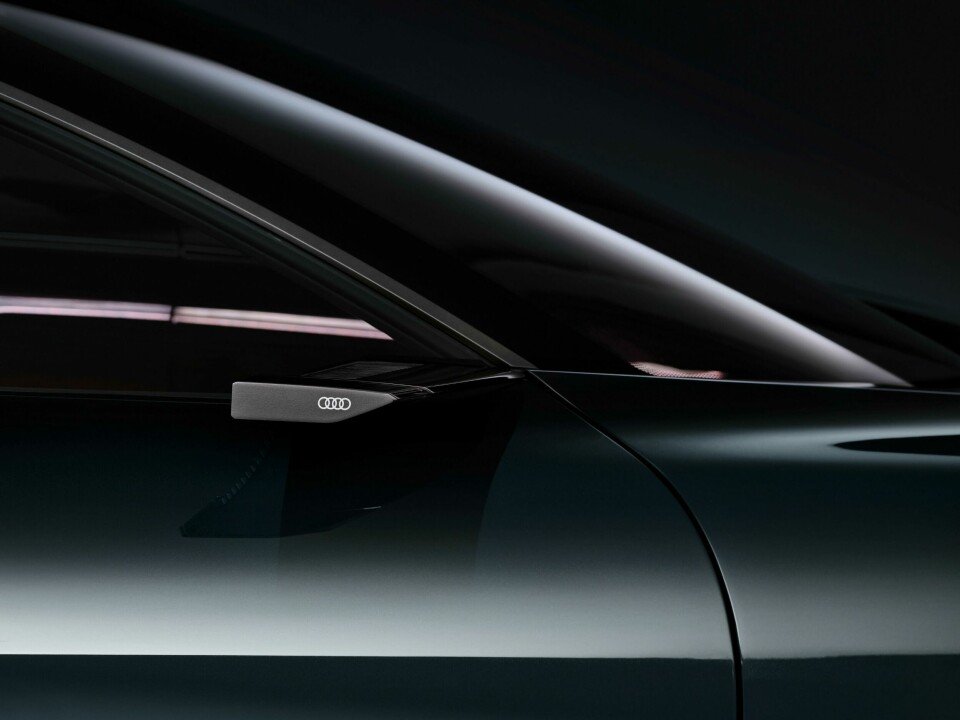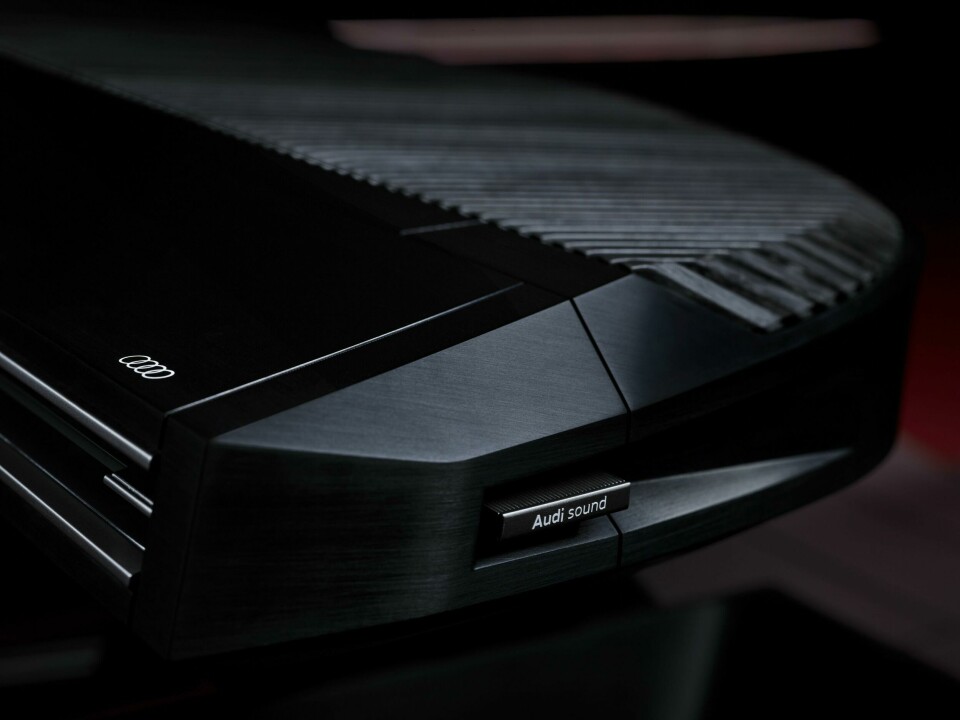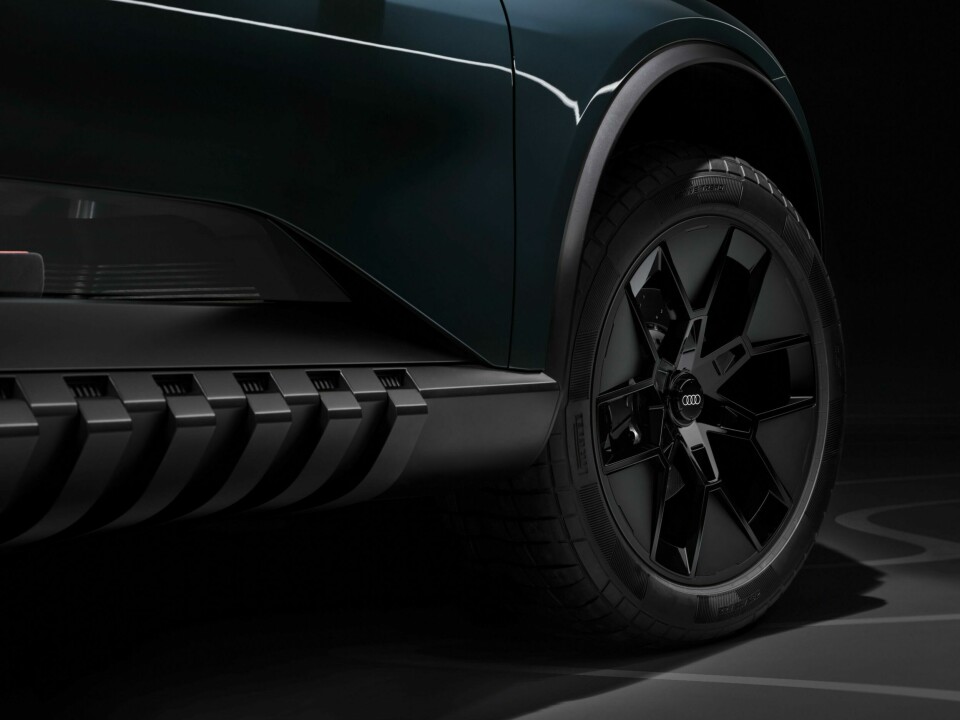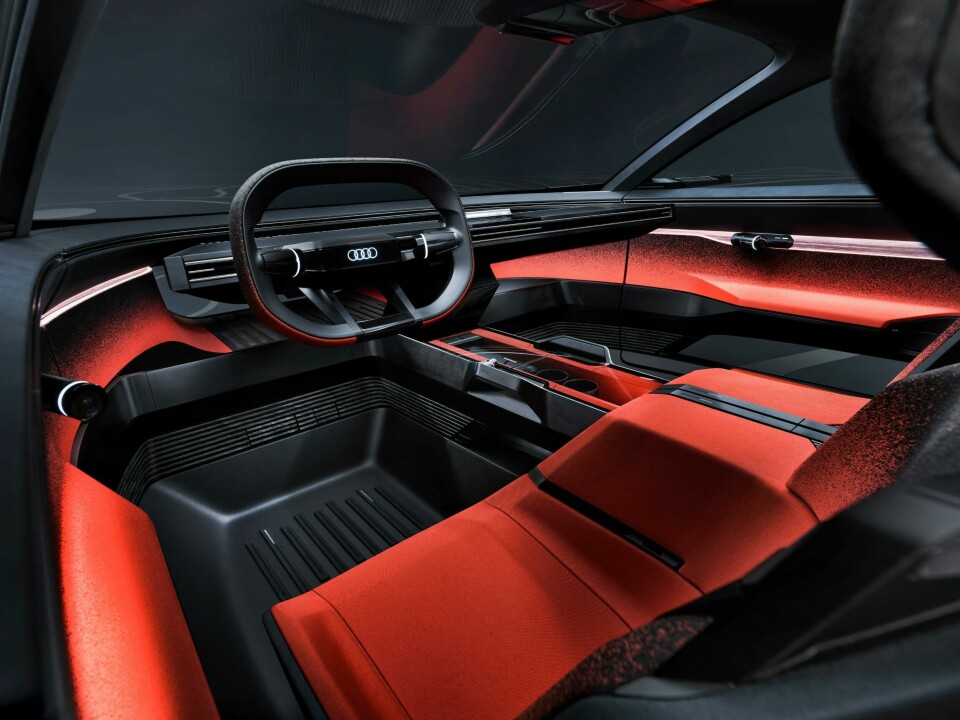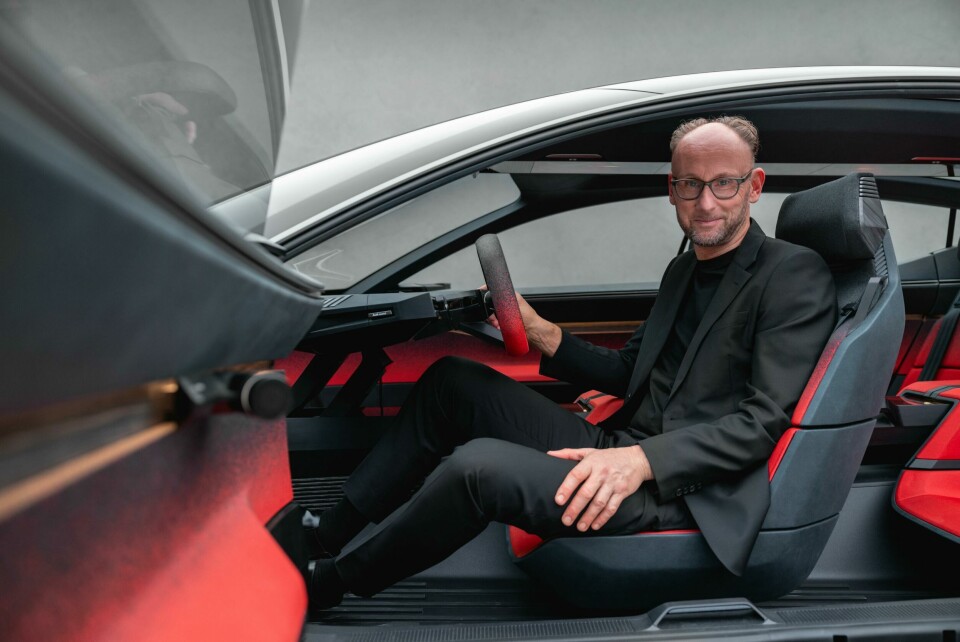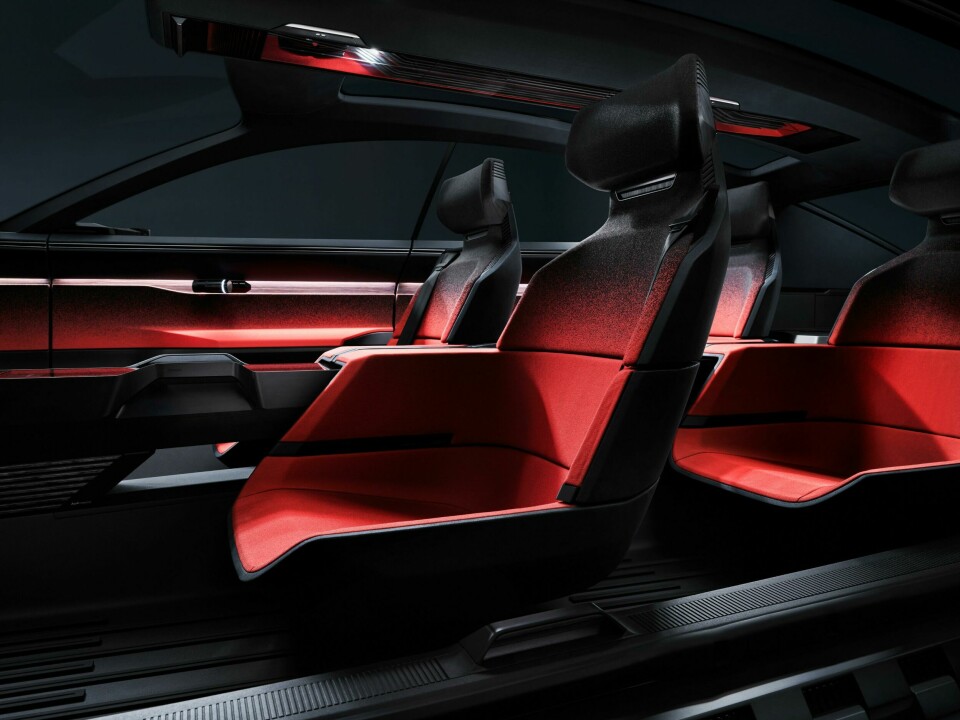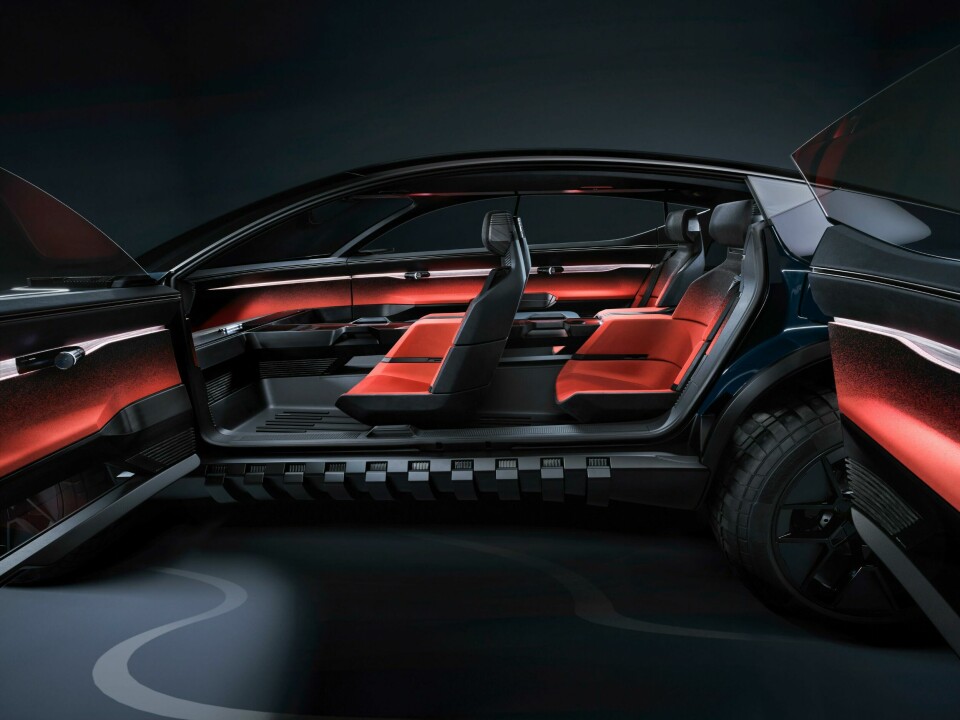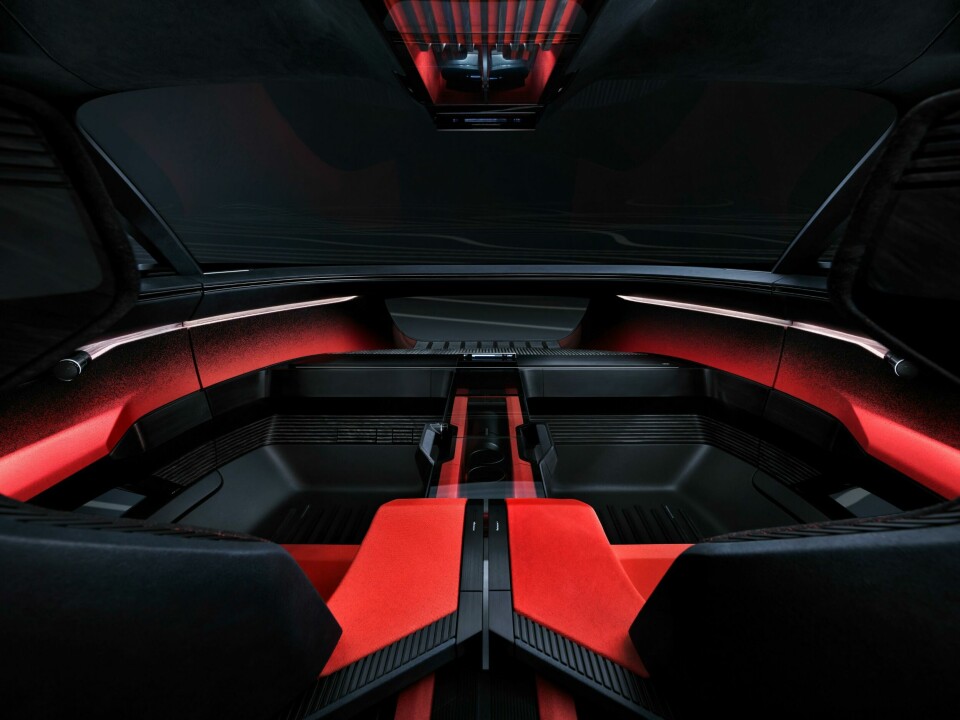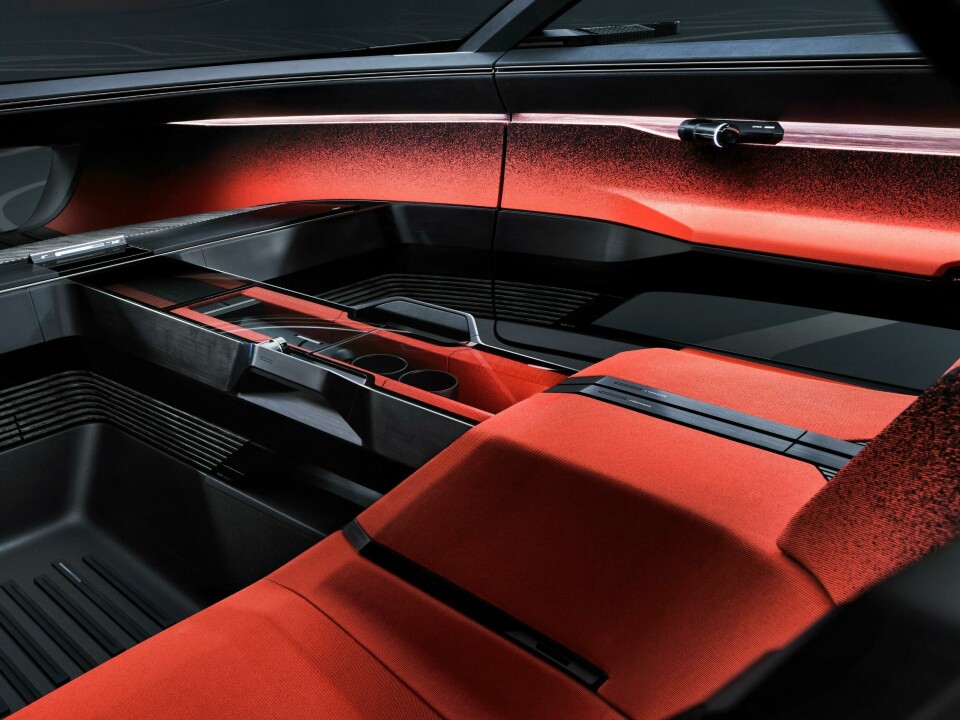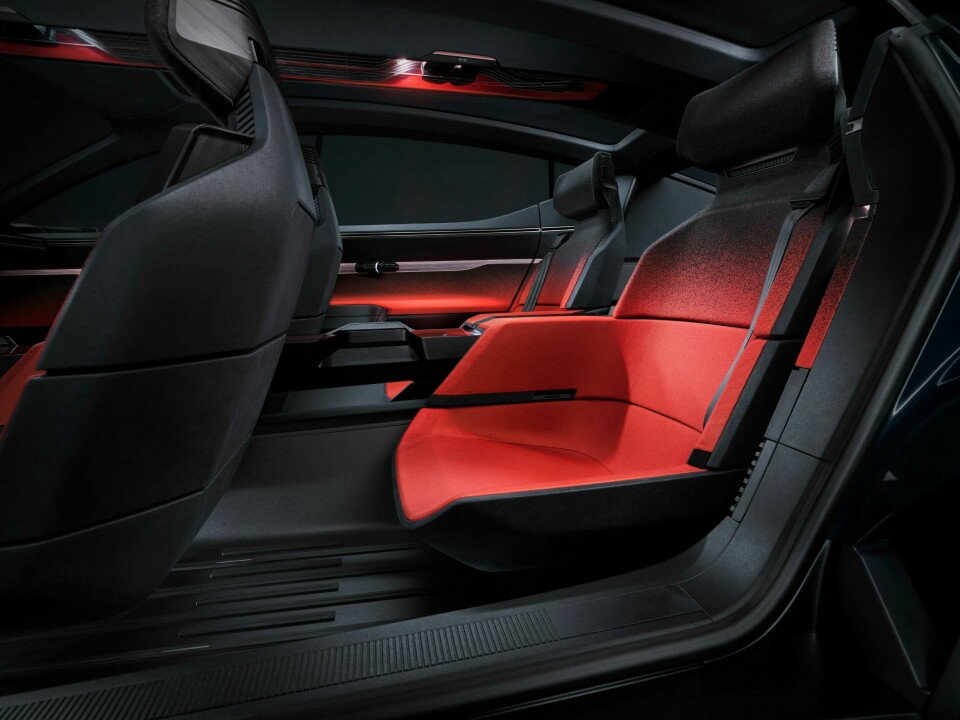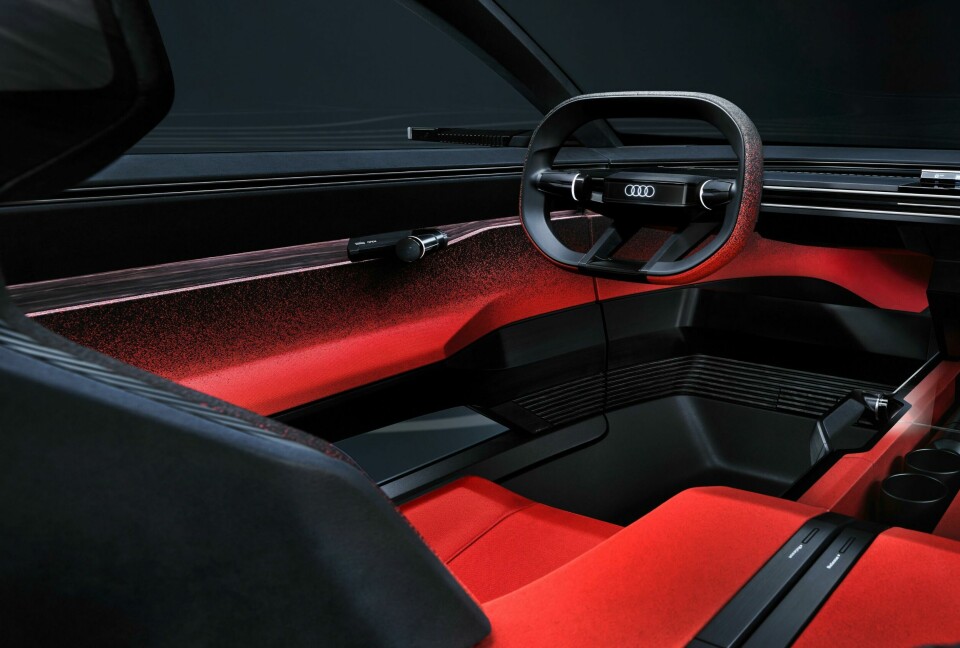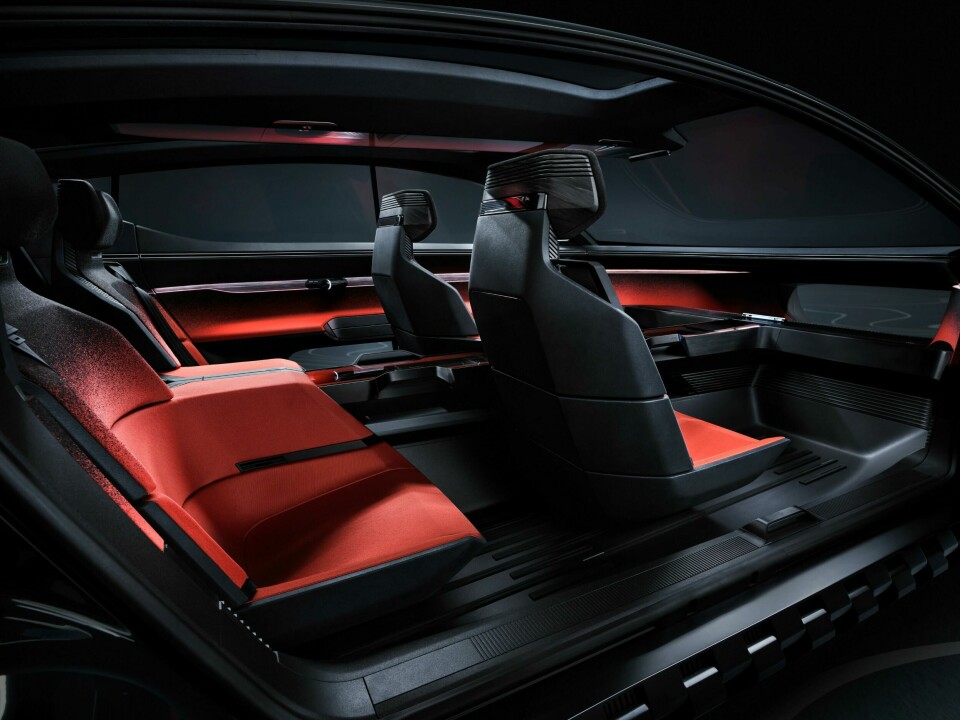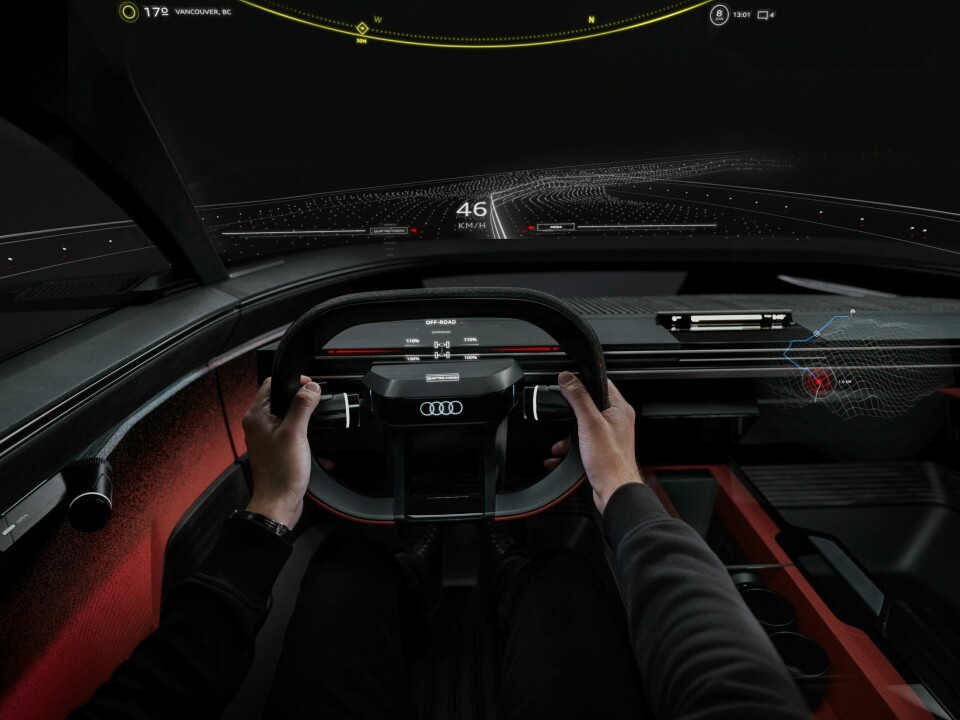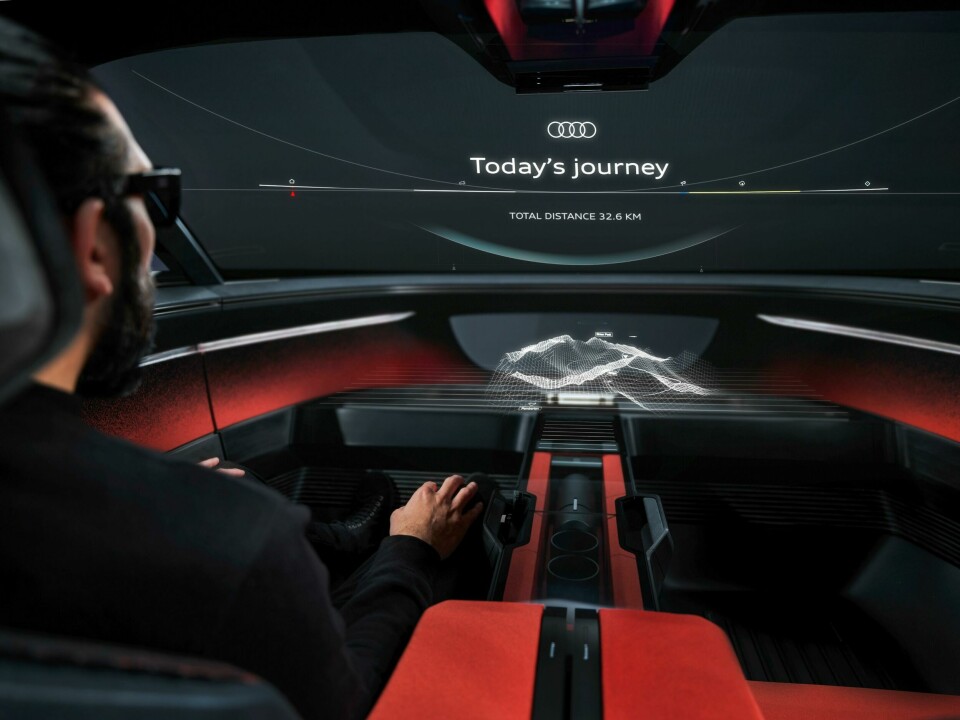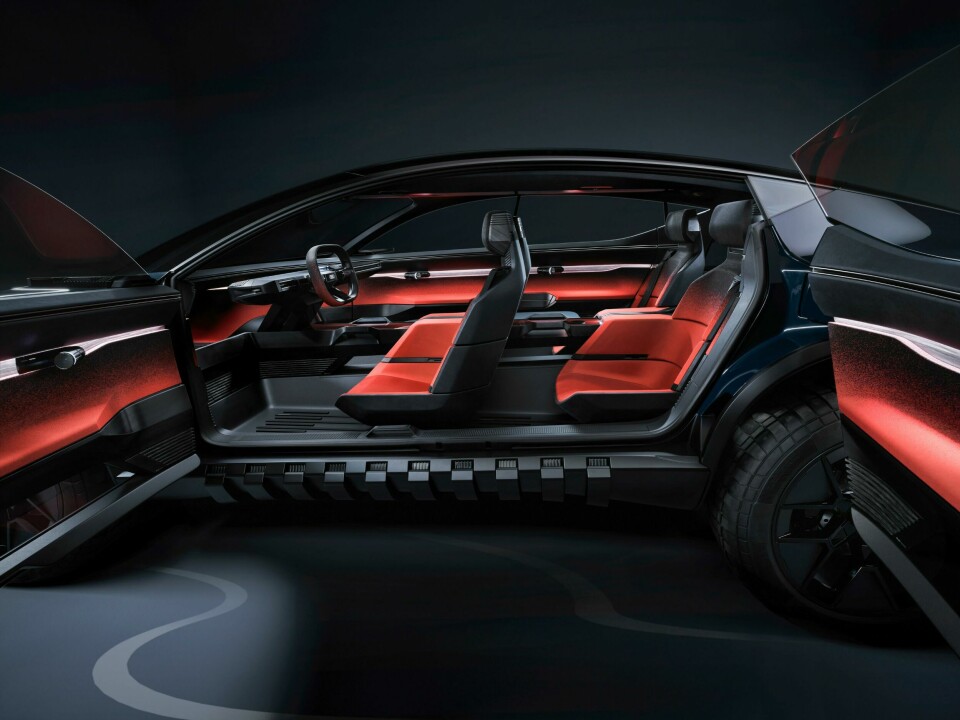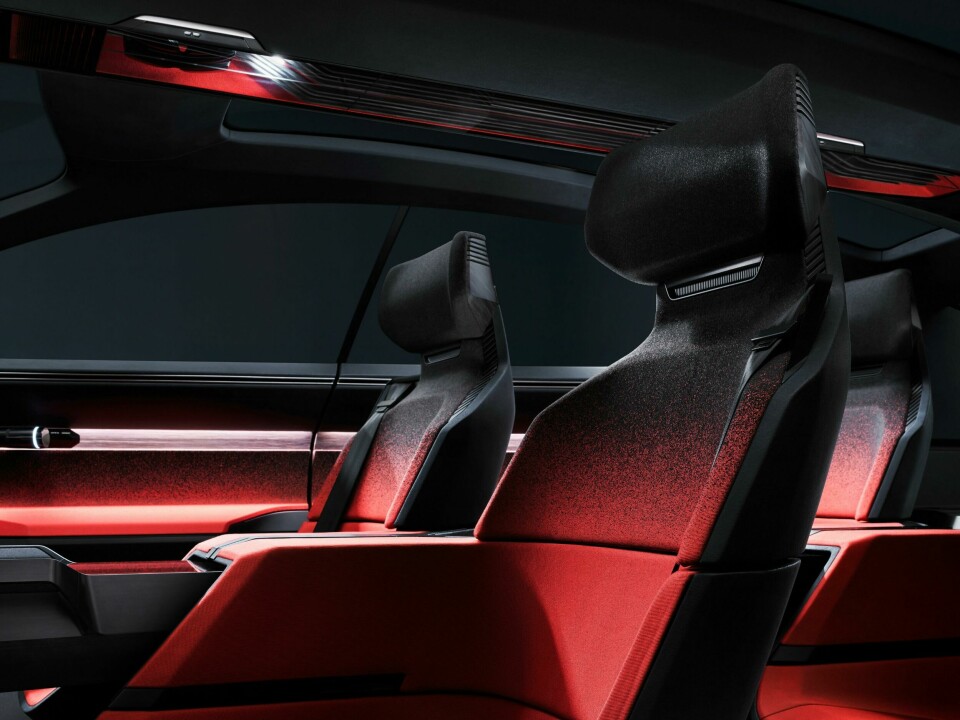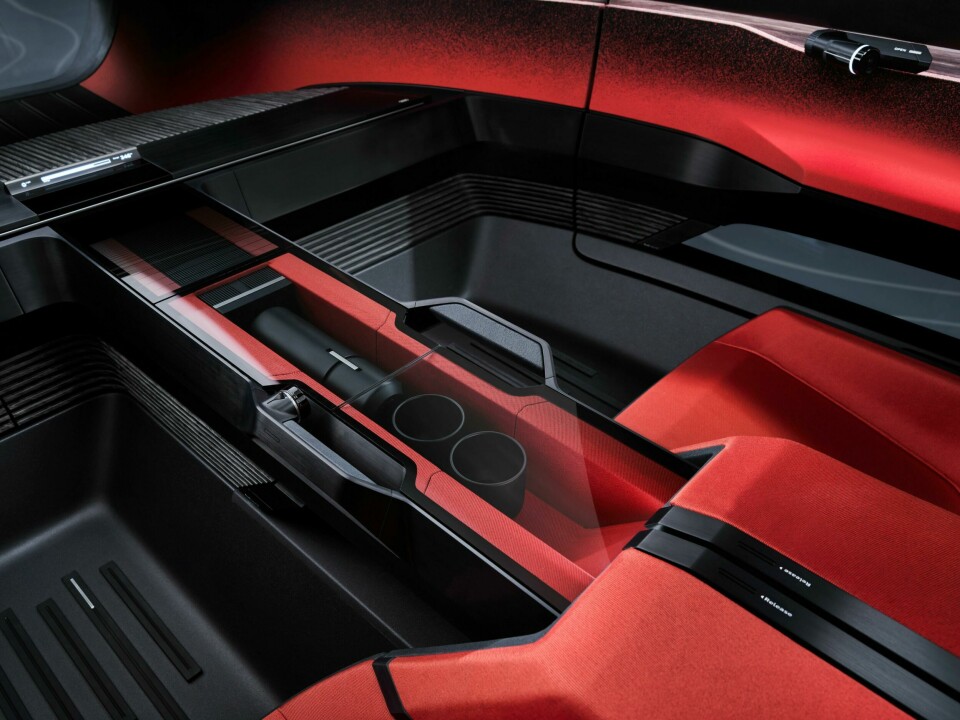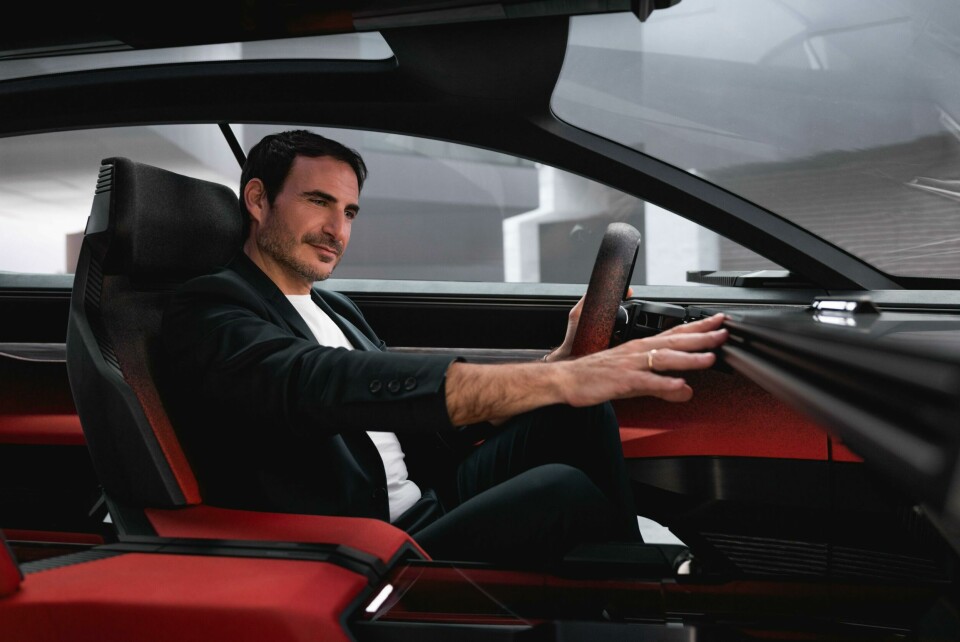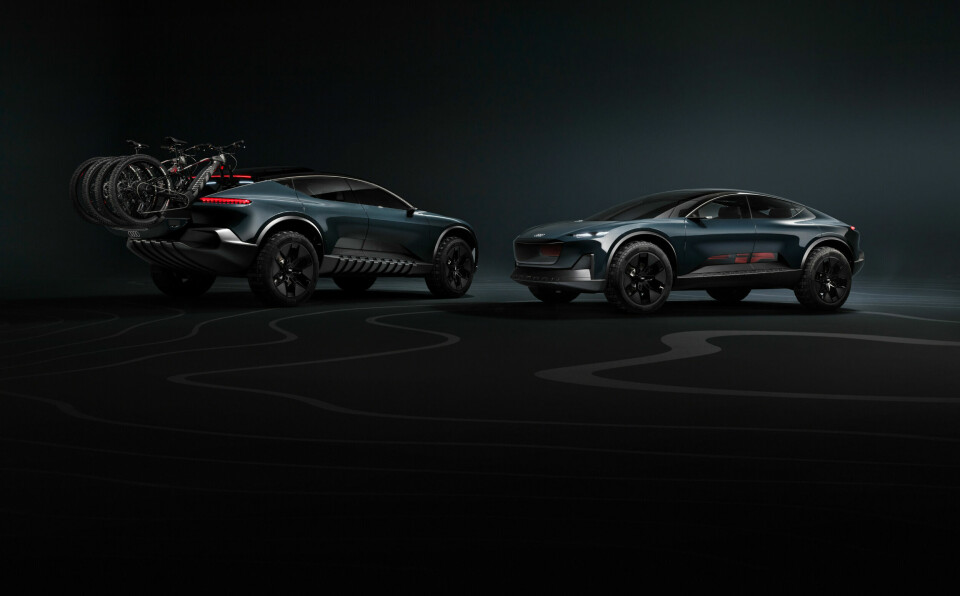
Audi challenges luxury typologies with new Activesphere concept
Audi’s shape-shifting new showcar goes from sportback to mini pickup truck, with a ground-breaking mixed-reality interior
We’ve talked for a while here at CDN about the end of traditional vehicle typologies, enabled by electric powertrains, pushed by ever-advancing UX/UI technology, and tantalized by the promise of fully autonomous driving. Audi is the latest to push the boundaries of body styles with the Activesphere concept, a luxury coupe-cum-pickup that forges a new direction for the Four Rings into outdoorsy utility.
“This typology is so unique, it’s something we’ve never seen before at Audi,” says Marc Lichte, head of Audi design. “It’s radically new and completely surprising.”
This is the fourth concept in Audi’s “sphere” series, rolled out over the past two-and-a-half years. The lion’s share of the digital work on the Activesphere was done at the automaker’s Malibu design loft in California, “with a little help on colour and trim and interface design,” according to Gael Buzyn, senior design director and head of the Malibu studio. The physical build was done in Ingolstadt. “We thought it was an opportunity to create a new type of crossover,” Buzyn explains. “Activesphere celebrates the connection with the great outdoors.”
Elements of the California lifestyle have all been main contributors
It’s certainly on-trend for Audi to explore outdoor adventuring, with Porsche recently unveiling the off-road-capable 911 Dakar, along with the renaissance of Meyers Manx, the skunkworks that makes VW-Beetle-based dune buggies, also born in Southern California and now led by former Porsche, Audi, and Volkswagen designer Freeman Thomas. Even Hyundai has found a niche with its Santa Cruz SUV-pickup hybrid, designed at the company’s Irvine studio in Orange County. Indeed, “elements of the California lifestyle have all been main contributors to the car,” an Audi spokesperson acknowledged at a media briefing ahead of the reveal.
With roughly the same footprint as the brand’s forthcoming A6 e-tron sedan, the Activesphere is what the design team dubs an active sportback. Buzyn explains the exterior design consists of two layers: the rugged lower, designed to show off-road capability, and the elegant upper, that appears as if it’s almost floating. “We wanted to keep the body as sleek as possible,” he says. At the same time, the Activesphere — as with all contemporary Audi designs — pays homage to Audi’s Quattro rally-racing history with bulging rear “blisters” and muscular surfacing.
Especially striking is the new take on the Audi singleframe grille, which is fully transparent so occupants can see the road ahead. “We wanted to keep the singleframe, because it’s still the visual identity for the brand,” Buzyn says. Along with the vast amounts of glass on the car, there is a feeling of openness not often afforded by a super-fast roofline.
It’s great, because we didn’t have to deal with those huge squares
The Activesphere’s transformation happens when the rear glass slides upward and the lower boot area folds down tailgate-style, revealing a small bed that can hold bikes, golf clubs, or whatever like-sized lifestyle-ish equipment you prefer. Buzyn and company can’t seem to get enough of these transformer-style show cars. Ahead of the 2021 Pebble Beach Concours d’Elegance, Buzyn showed us the Skysphere concept, which stretches with the touch of a button from driver-oriented sportscar to autonomous grand tourer. Before that, Buzyn led the design of the PB18, a racecar concept shown in Pebble Beach in 2018 that featured a moving seat that travels from the driver’s side to the centre.
As provocative as the exterior is the car’s mixed-reality interior. Designers ditched screens for augmented-reality glasses that can display functions in various locations throughout the cabin. “For us as designers it’s great, because we didn’t have to deal with those huge squares,” Buzyn says, referring to the still-vexing dilemma of where to put the displays and how big they should be. At a time when many studios are using large head-up displays, UI/UX designer Christina Huber says the goal of this project was to use the entire interior.
“For us it was important not to just focus on the windscreen; we wanted to use the entire space of the vehicle,” she explains. “Also, the mixed-reality glasses become part of the ecosystem as you can also take them outside. It will be part of our everyday reality, like your smartphone, and will go with you wherever you go.”
We’re thinking about a utopian — rather than a dystopian — future
Without the interruption of displays, the dramatic wraparound cabin glows with ambient light, done in black and fiery red. “The colour and trim theme is fire and ice,” Buzyn explains. “It came from a picture that the colour and trim department found. There was this ice that looked almost black,” which inspired the exterior paint, dubbed Arctic Teal, “and in the background there was this mountain illuminated by the setting sun,” which drove the interior colour scheme.
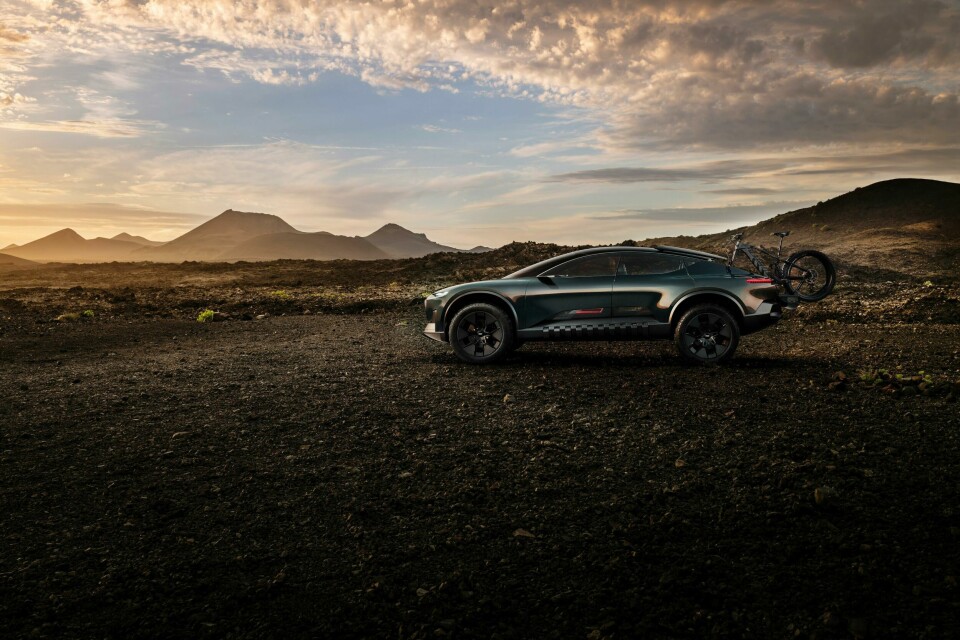
But is the Activesphere another just another example of l’art pour l’art? Of all the sphere concepts, the Grandsphere touring saloon and the compact Urbansphere seem the most likely candidates to go into production, at least in form. Still, the Activesphere is a reassuring indicator that Audi is rethinking its future, expanding its vision to new types of vehicles — and new potential customers.
And while mixed reality might not be ready for prime time, one Audi designer says the team is optimistic: “They are technologies that haven’t found their true voice yet, but there will be moments coming very soon where these technologies make perfect sense.” And another adds: “We’re thinking about a utopian — rather than a dystopian — future.”
